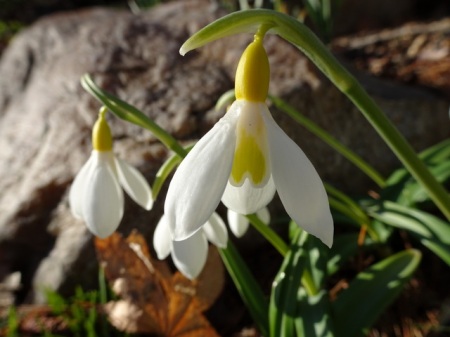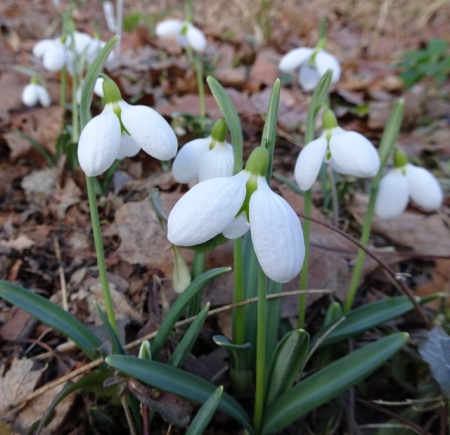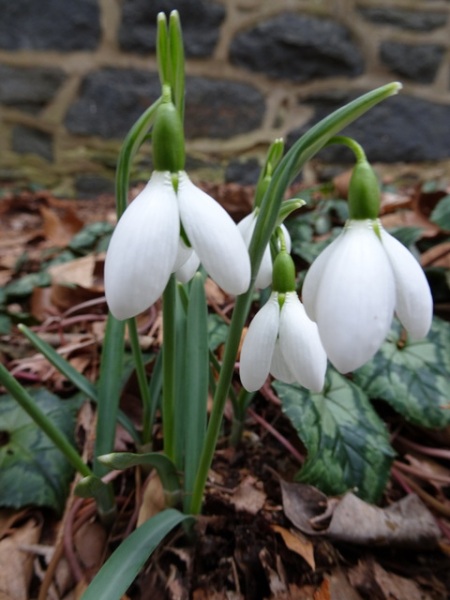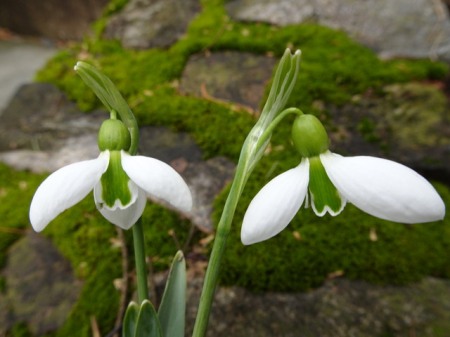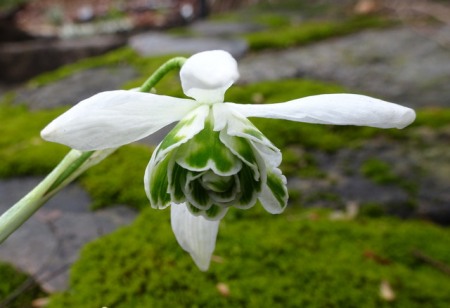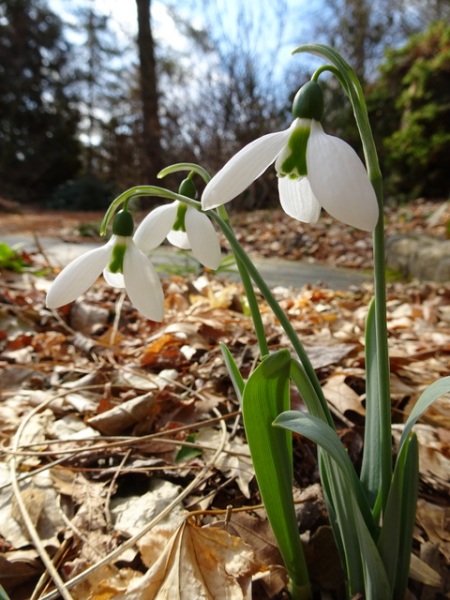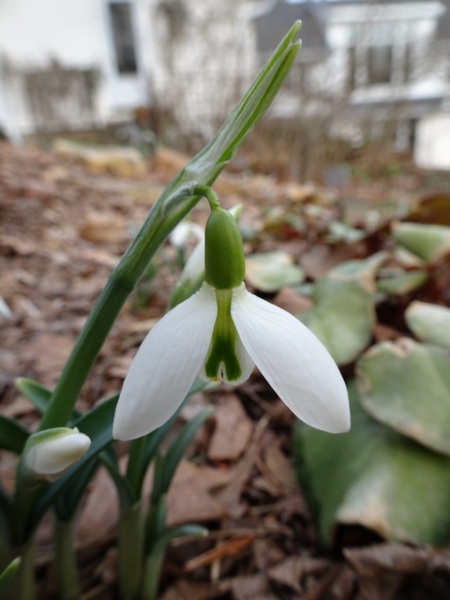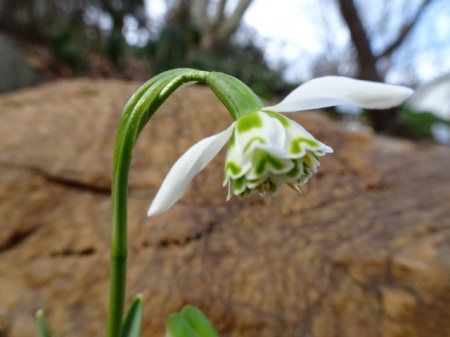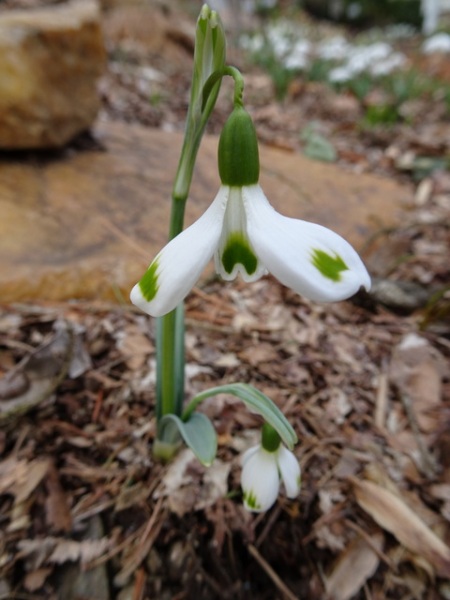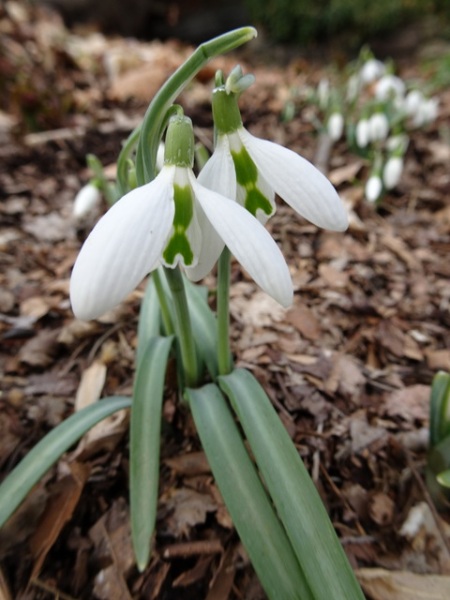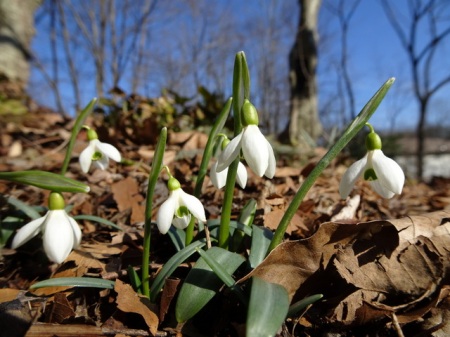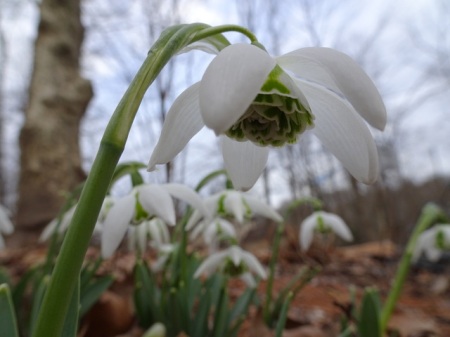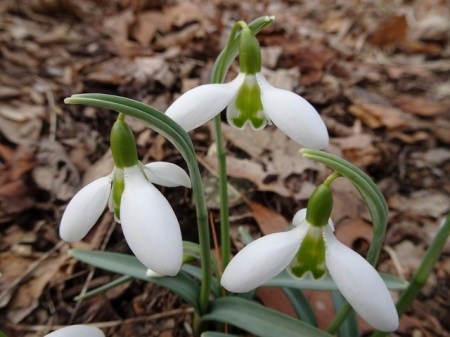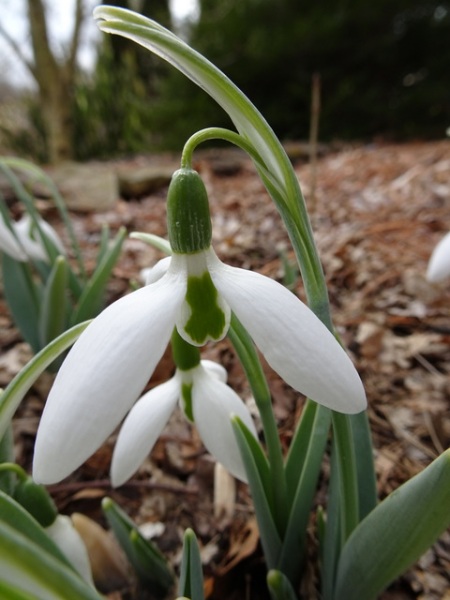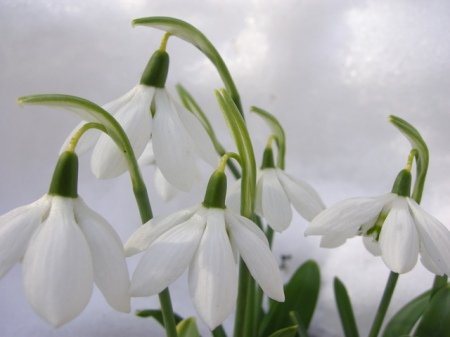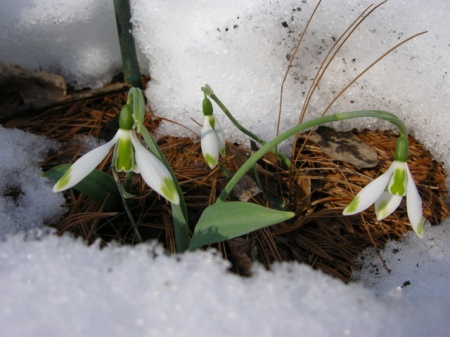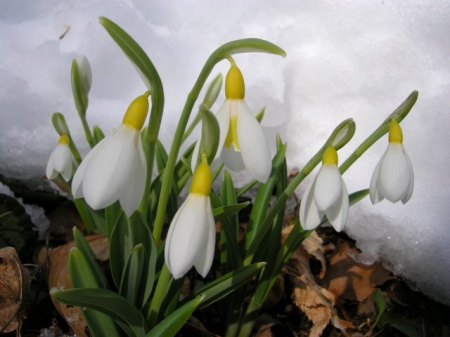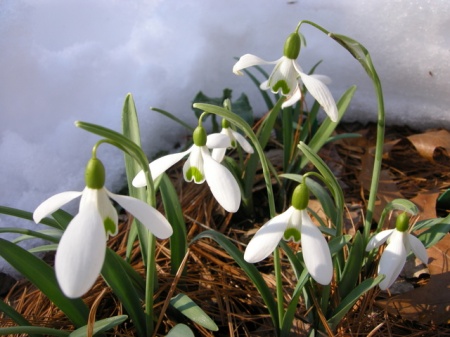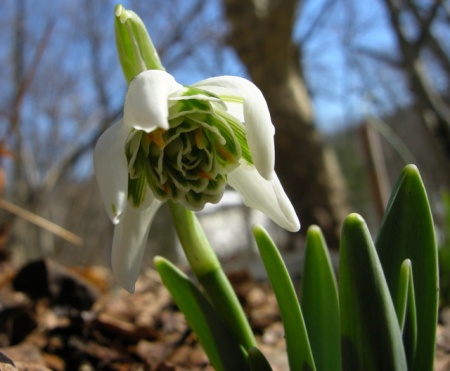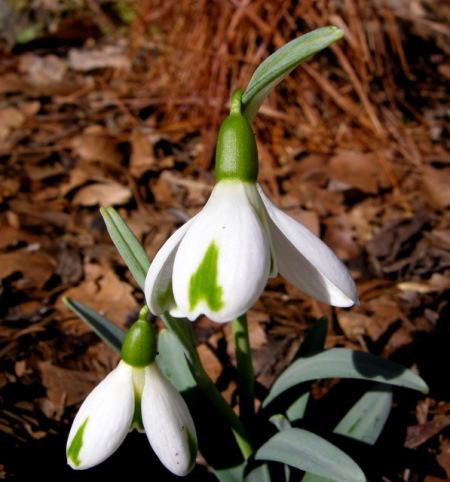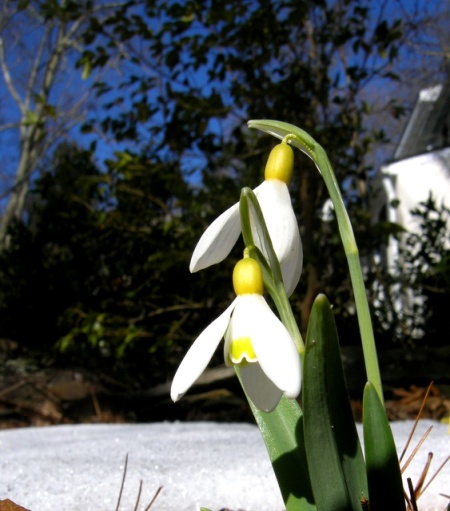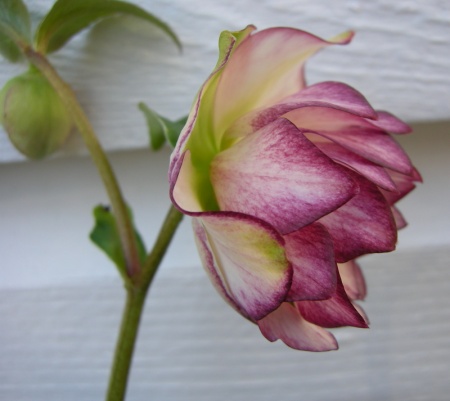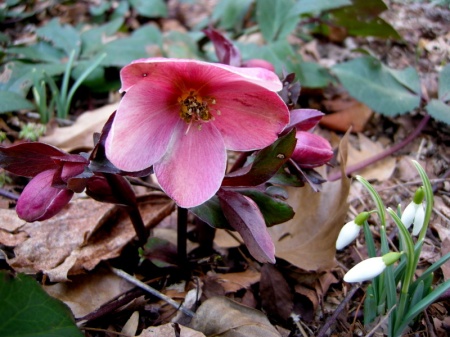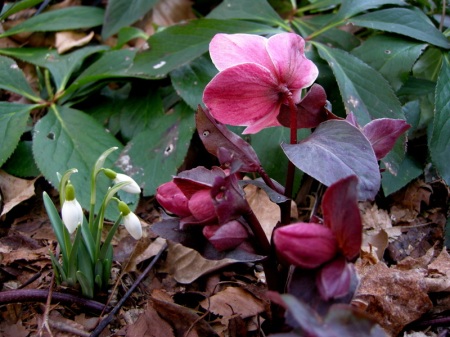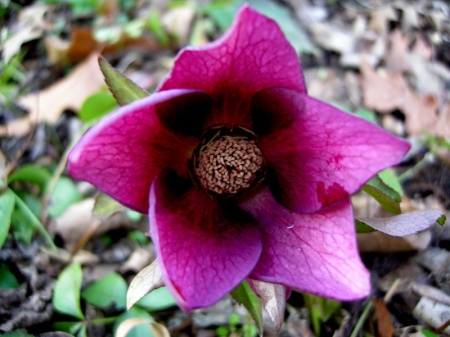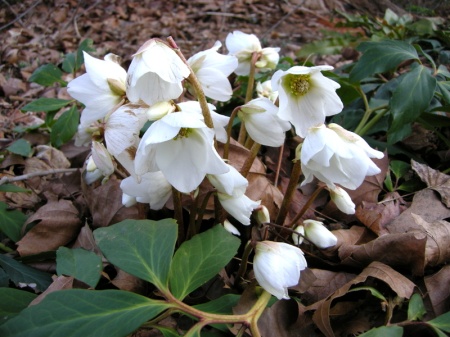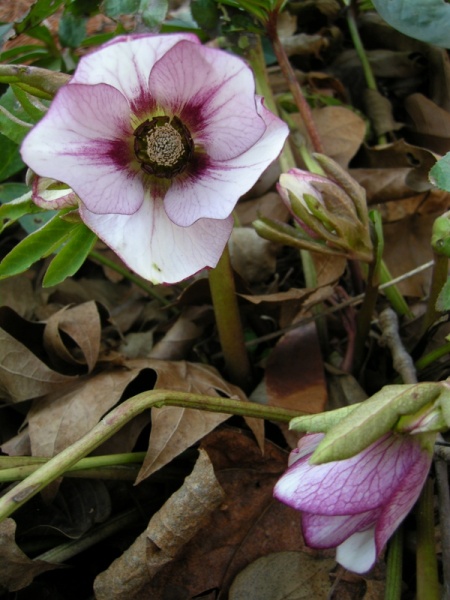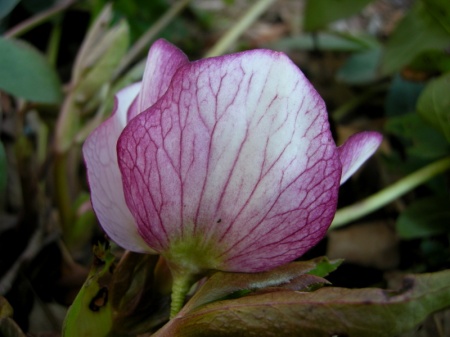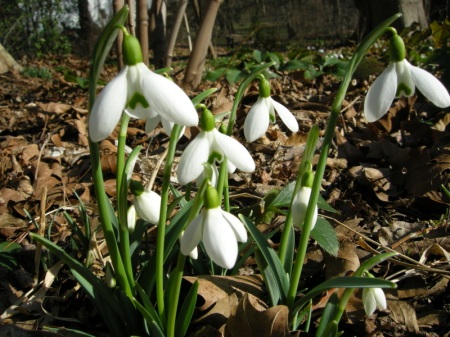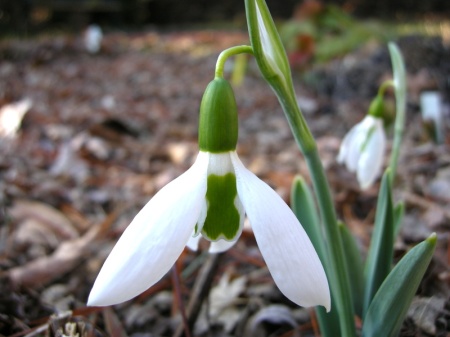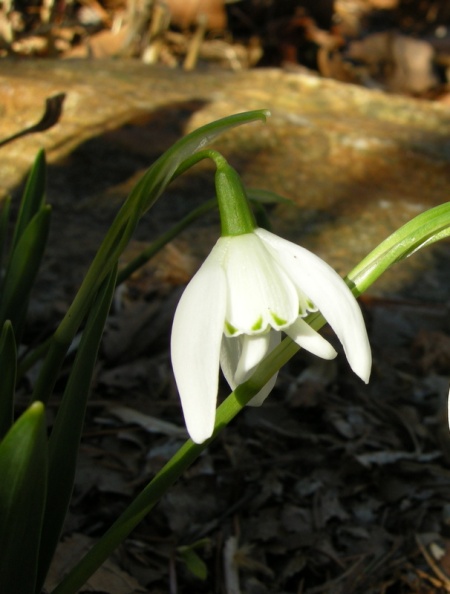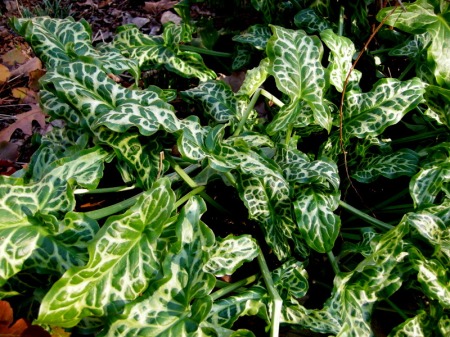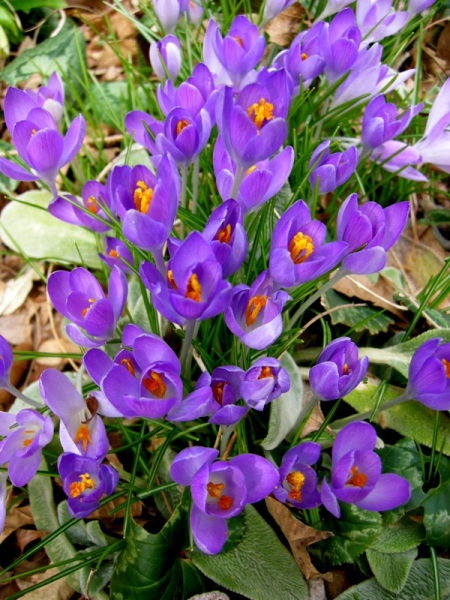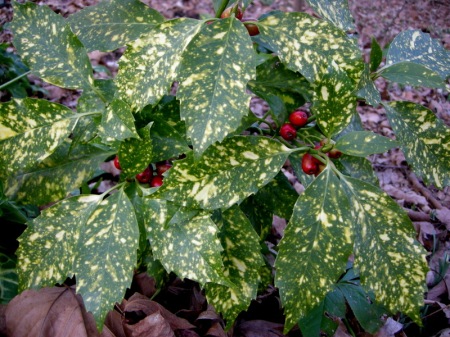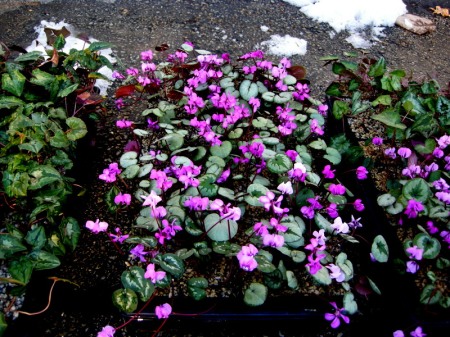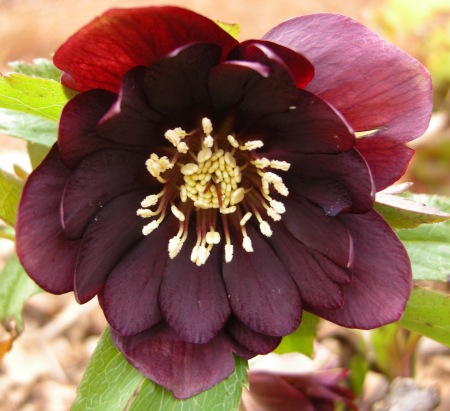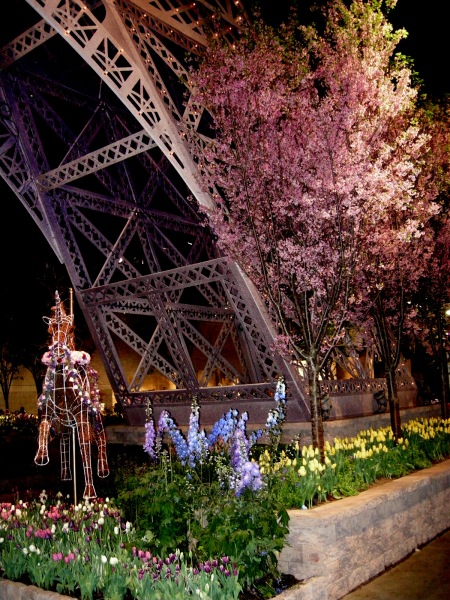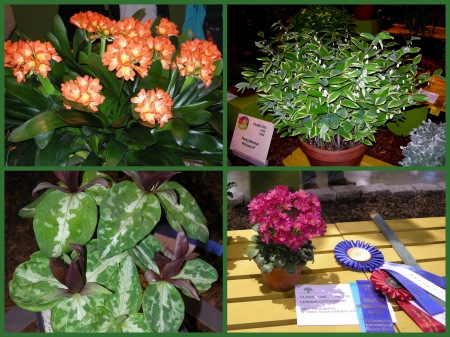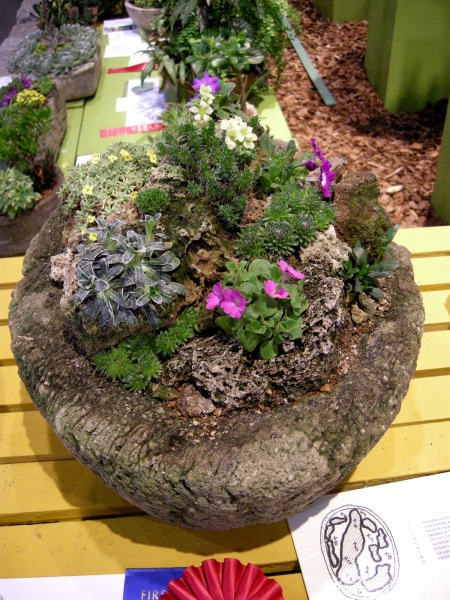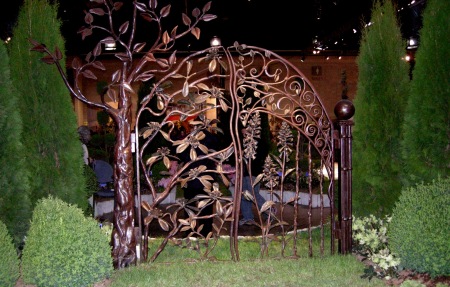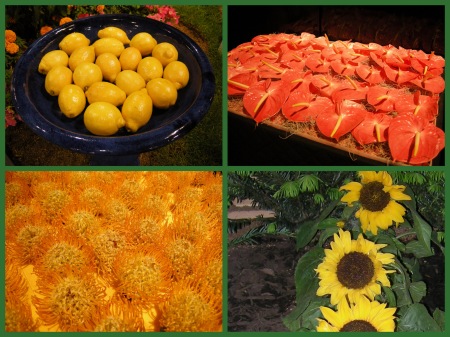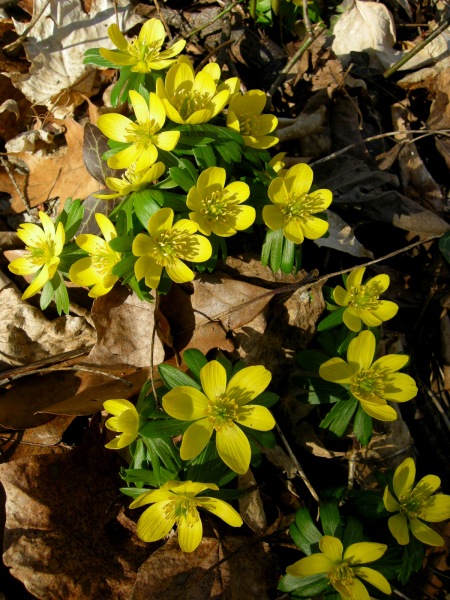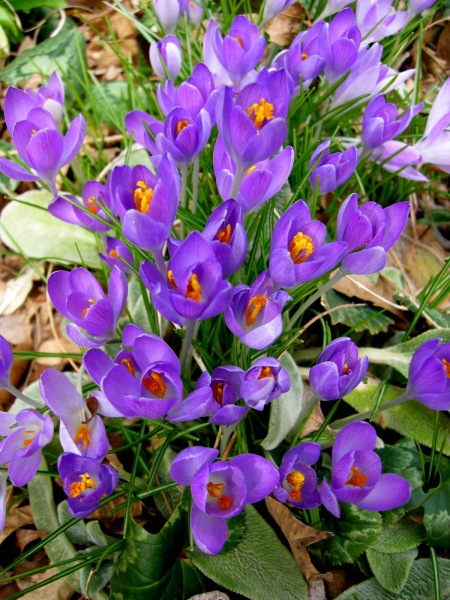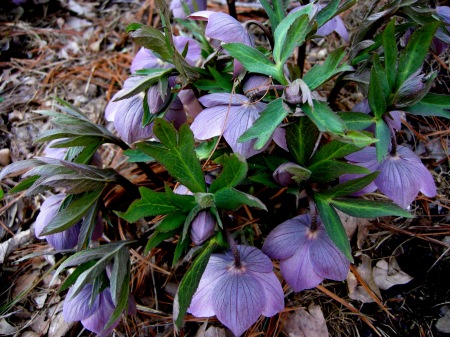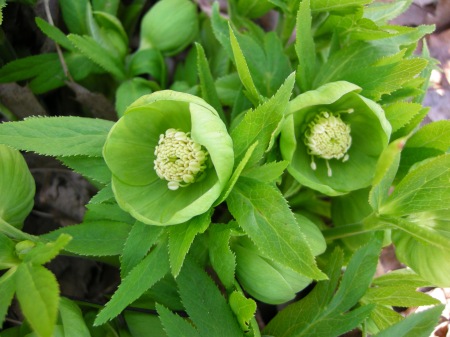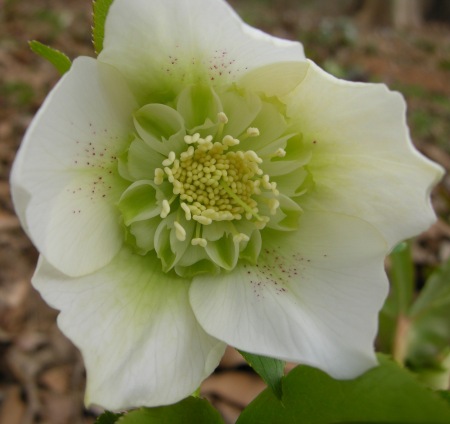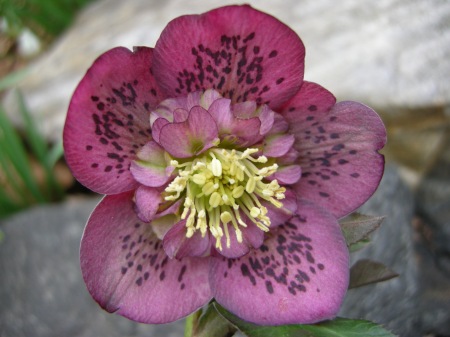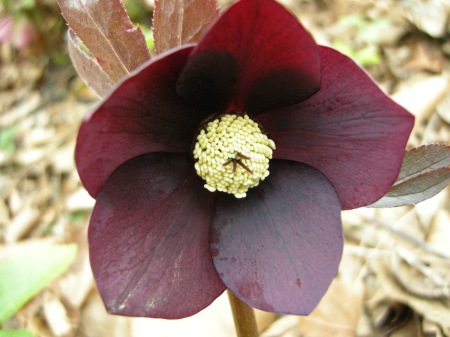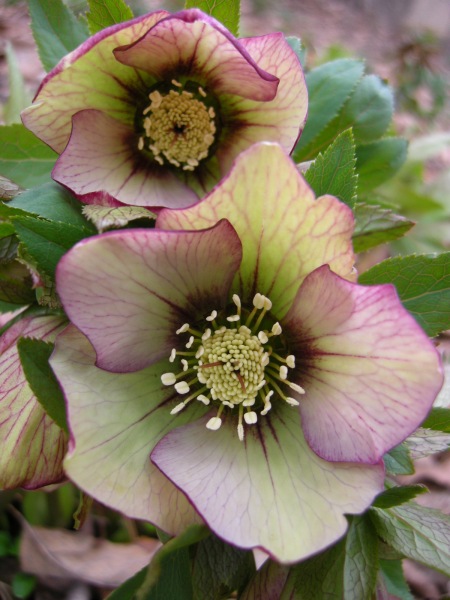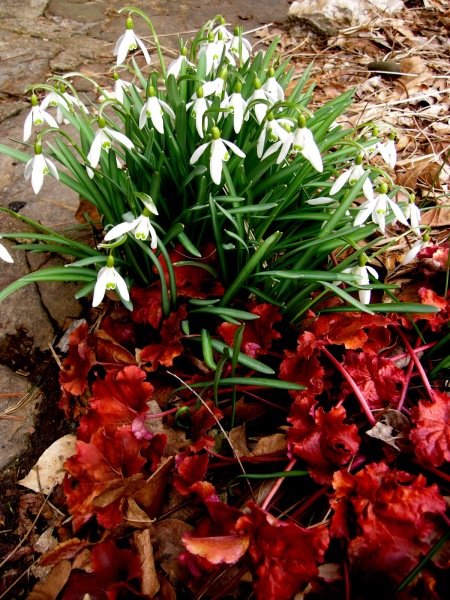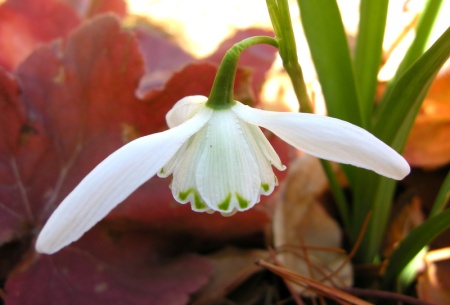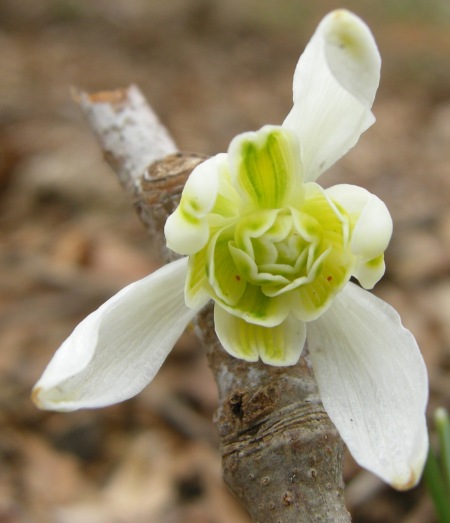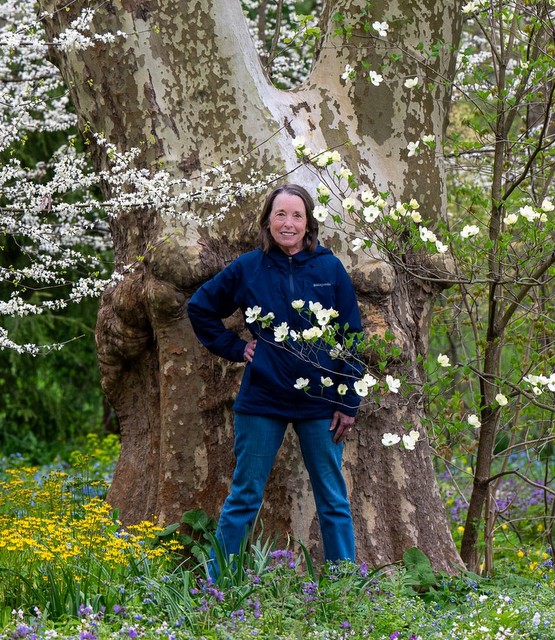Carolyn’s Shade Gardens is a retail nursery located in Bryn Mawr, PA, specializing in showy, colorful, and unusual plants for shade. The only plants that we ship are snowdrops to the US only. For catalogues and announcements of local events, please send your full name, mailing address, and cell number to carolyn@carolynsshadegardens.com and indicate whether you are mail order only. Click here to get to the home page of our website for catalogues and information about our nursery and to subscribe to our blog.
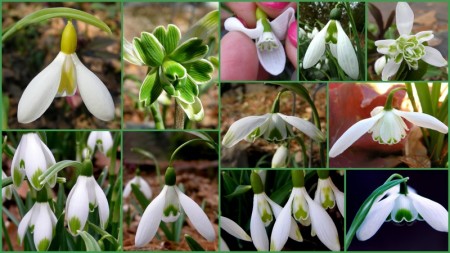 Some of the snowdrops available from Carolyn’s Shade Gardens in 2013.
Some of the snowdrops available from Carolyn’s Shade Gardens in 2013.
.
Our current snowdrop catalogue is on line here.
.
This post includes photographs and colorful descriptions of the 4 new snowdrops I am offering for sale in my 2013 Snowdrop Catalogue. There were three more new cultivars offered, but they sold out within two days of the catalogue being posted on my website. For entertaining descriptions of most of the remaining 13 varieties offered, click here.
 The Greatorex double snowdrop ‘Hippolyta’ was new in 2012. For background on the Greatorex doubles, a discussion of snowdrop provenance, and information about ‘Hippolyta’, click here. Photo by Paddy Tobin. We are also offering the early flowering Greatorex double ‘Ophelia’.
The Greatorex double snowdrop ‘Hippolyta’ was new in 2012. For background on the Greatorex doubles, a discussion of snowdrop provenance, and information about ‘Hippolyta’, click here. Photo by Paddy Tobin. We are also offering the early flowering Greatorex double ‘Ophelia’.
In Snowdrops or The Confessions of a Galanthophile, I described my transition from someone who grows snowdrops to someone who is obsessed with them. In Snowdrops: Further Confessions of a Galanthophile, I explained that most snowdrop cultivars can be appreciated as much for their colorful history as for their ornamental characteristics. That history is contained in Snowdrops: A Monograph of Cultivated Galanthus by Matt Bishop, Aaron Davis, and John Grimshaw (Griffin Press 2006), commonly called the “snowdrop bible”.
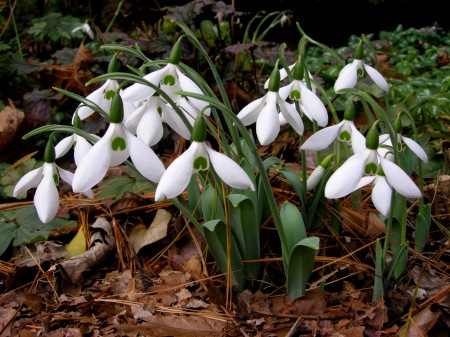 ‘Potter’s Prelude’ is a vigorous and beautiful snowdrop that blooms in the fall. This year it started in mid-November and still has some fresh flowers today (1/6/13). For more information on fall-blooming snowdrops, click here.
‘Potter’s Prelude’ is a vigorous and beautiful snowdrop that blooms in the fall. This year it started in mid-November and still has some fresh flowers today (1/6/13). For more information on fall-blooming snowdrops, click here.
Whenever I obtain a new snowdrop or offer one in my catalogue, I always research it thoroughly both for fun and to make sure that what I am offering is the genuine article. The first place that I go is to the “snowdrop bible” to review the detailed description and history of the species or cultivar in question. This year I was also able to consult a new snowdrop book, Snowdrops by Gunter Waldorf (Frances Lincoln Limited 2012). What it lacks in detail, it makes up for with 300 photographs accompanied by short descriptions highlighting the salient characteristics of the snowdrops profiled. It also contains no nonsense advice about growing and collecting snowdrops.
 Although the common snowdrop, G. nivalis, pictured above with Italian arum and snow crocus, is the most prevalent snowdrop in gardens, it is by no means common in the ordinary sense of the word. In fact, it is the best choice for gardeners who want to naturalize snowdrops in masses.
Although the common snowdrop, G. nivalis, pictured above with Italian arum and snow crocus, is the most prevalent snowdrop in gardens, it is by no means common in the ordinary sense of the word. In fact, it is the best choice for gardeners who want to naturalize snowdrops in masses.
After hitting the books, I search the internet and read everything that has been written about the new snowdrop. The available material is mostly the catalogues of all the big UK snowdrop sellers like Avon Bulbs, Harveys Garden Plants, and Monksilver Nursery, among others, but sometimes I come across fun historical or informational articles. I also consult the Scottish Rock Garden Club Forum Galanthus thread where galanthophiles from all over the world meet to obsess. After that, I look at photo galleries of snowdrops, particularly the Galanthus Gallery and the new snowdrop photos on the Dryad Nursery website.
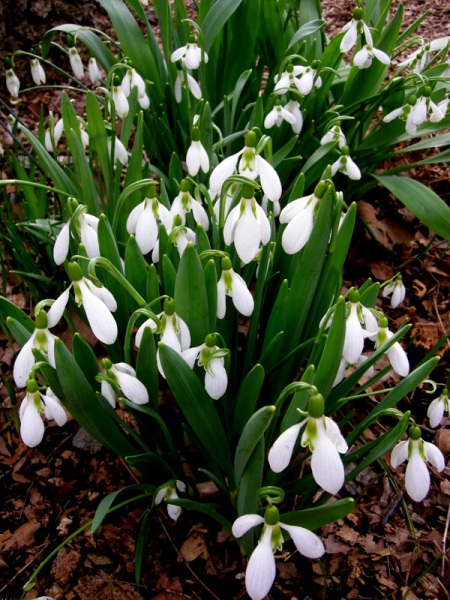 The giant snowdrop, G. elwesii, is also a vigorous spreader. This is the species massed at Winterthur.
The giant snowdrop, G. elwesii, is also a vigorous spreader. This is the species massed at Winterthur.
Finally, as much as possible, I research the provenance of the snowdrop I am adding to my catalogue or collection. Provenance is the history of a snowdrop’s ownership, documenting the authenticity of the actual bulbs being sold. It is important that snowdrops come from a reputable source and be carefully tracked by subsequent owners. With over 500, and some say 1,000, snowdrop cultivars circulating among collectors, it is easy to make mistakes. For more information on provenance, click here. With that background, on to the new snowdrops.
 The very rare yellow snowdrop ‘Wendy’s Gold’.
The very rare yellow snowdrop ‘Wendy’s Gold’.
I am thrilled to offer a yellow snowdrop for the first time, and not just any yellow, but ‘Wendy’s Gold’, the cream of the crop. Not only is this snowdrop much sought after even in England, but it easily refutes the oft made claim that all snowdrops look alike. It was discovered in 1974 by Bill Clark, the Warden of the UK National Trust property Wandlebury Ring near Cambridge. Ten years later, with some prodding, he realized how rare it was and decided to name it after his wife Wendy. All the bulbs except three were then sold to a Dutch bulb company where they subsequently died, Luckily, the remaining bulbs proved robust, and we have ‘Wendy’s Gold’ today.
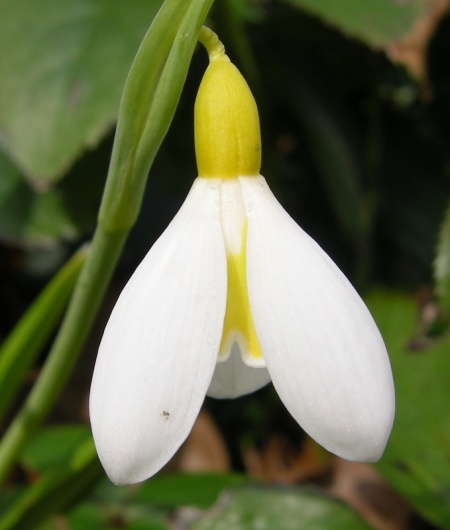
‘Wendy’s Gold’ is a superb and vigorous snowdrop with a yellow ovary (the “cap” above the petal-like segments) and a large and vivid yellow mark on the inner segments. Its G. plicatus parentage gives it beautiful wide pleated leaves with folded margins, serving as a gorgeous backdrop for the striking flowers.
.
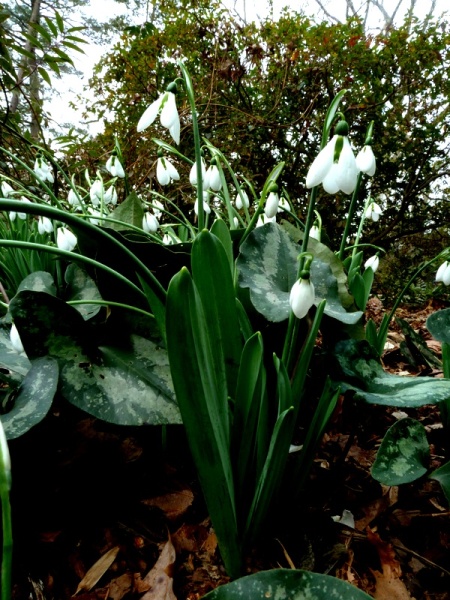 ‘Standing Tall’ is a very impressive snowdrop.
‘Standing Tall’ is a very impressive snowdrop.
In 1988, regional horticulturist Charles Cresson began evaluating a G. elwesii snowdrop known until this year as 88-1. Over the years of testing it in various conditions in his garden, he discovered that 88-1 is a remarkable snowdrop. Its 12″ height, about as tall as snowdrops get, and very upright habit give it a commanding presence in the garden. However, as it turns out, 88-1 doesn’t have much competition from other snowdrops because it starts blooming right before Christmas and continues through the month of January, a time period when few other snowdrops bloom.
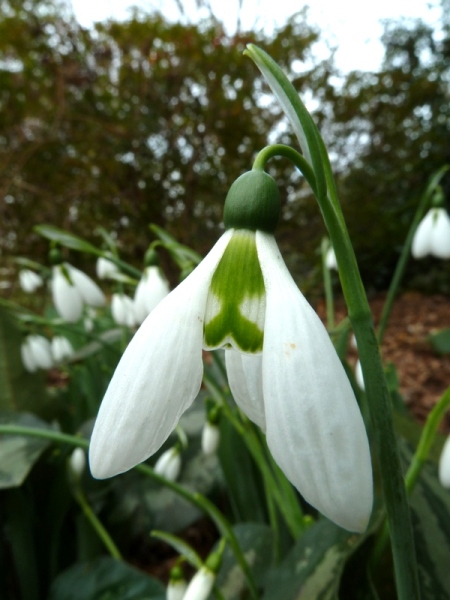 A close up of ‘Standing Tall’s’ flower.
A close up of ‘Standing Tall’s’ flower.
Luckily, I was able to convince Charles that 25 years was long enough to evaluate a snowdrop, and he should introduce this absolutely outstanding new selection. Charles decided to name it ‘Standing Tall’ to reflect its height, very upright habit, and ability to stand up to whatever the season brings, lying down in very cold weather and popping right back up as if nothing had happened. Charles is in the process of registering it with the KAVB, the international registration authority for bulb cultivars in the Netherlands. In the meantime, Carolyn’s Shade Gardens is thrilled to be chosen to introduce it for sale.
.
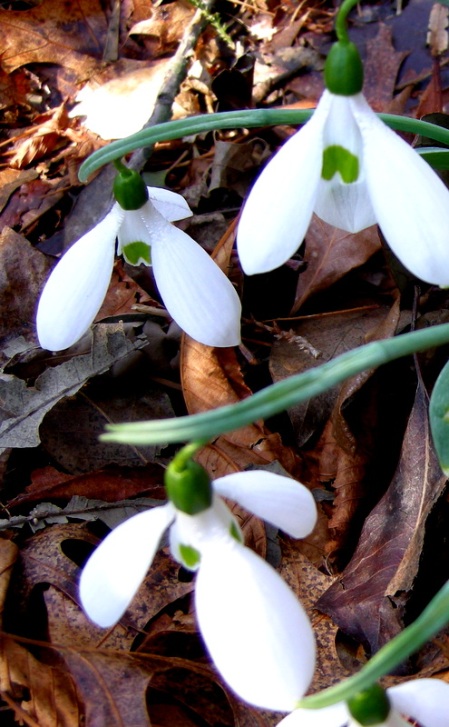 The large and elegant flowers of ‘Mighty Atom’.
The large and elegant flowers of ‘Mighty Atom’.
‘Mighty Atom’ is a beautiful snowdrop with very large, rounded, bright white flowers—the biggest flowers in the catalogue—with a bold, deep green mark on the inner segments. Its habit is short, compact, and even making an exceptional overall presentation. I have admired it for years and urged Charles to offer it, but he was reluctant due to its somewhat confused history.
British snowdrop legend EB Anderson inherited the original ‘Mighty Atom’ from John Gray in 1952 and subsequently named it. However, in later years, Snowdrops states that Anderson distributed a group of distinct but excellent clones, now known as the ‘Mighty Atom’ complex, under this name. Charles’s stock came from plantsman Don Hackenberry who can trace its lineage directly back to EB Anderson, although it is not an offset of what is believed to be Gray’s “original” clone. This member of the ‘Mighty Atom’ complex has proven to be reliable, vigorous, and trouble-free.
.
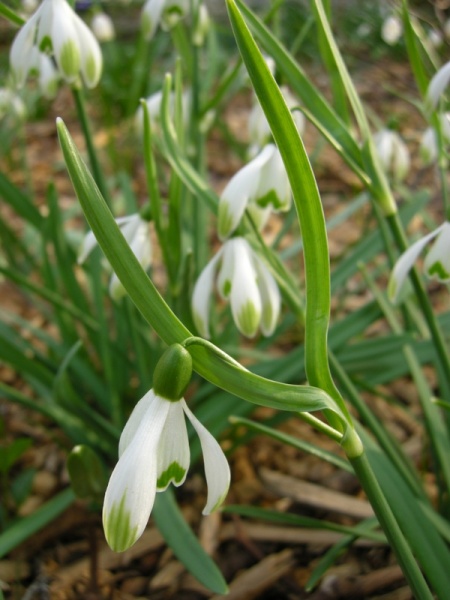 ‘Scharlockii’ is characterized by the “rabbit ear’s” formed by its spathe (flower covering).
‘Scharlockii’ is characterized by the “rabbit ear’s” formed by its spathe (flower covering).
The final member of the four new snowdrops in my 2013 Snowdrop Catalogue is ‘Scharlockii’, a cultivar of the common snowdrop, G. nivalis. It is a charming and distinctive snowdrop with boldly marked green tips on its outer segments but most notable for the rabbit ears (see photo) formed when its spathe splits into two prominently upright, leaf-like halves. It was discovered in 1818 by Herr Julius Scharlock of Grandenz, Germany, and named in 1868. Charles got his stock from Winterthur, known for its amazing snowdrop display, when he worked there in the early 1990s.
.
Obviously, I find everything about snowdrops fascinating and hope I have communicated some of my infatuation to you. If you are in the U.S. and want to order from the catalogue, just follow the directions for mail order.
Carolyn
Note: Every word that appears in orange on my blog is a link that you can click for more information. If you want to return to my blog’s homepage to access the sidebar information (catalogues, previous articles, etc.) or to subscribe to my blog, just click here.
 The stable block at Wandlebury Ring was built for James II in the late 17th century and later housed the famous Godolphin Arabian.
The stable block at Wandlebury Ring was built for James II in the late 17th century and later housed the famous Godolphin Arabian. The very famous yellow snowdrop ‘Wendy’s Gold’ was first observed in the park in 1974 by Bill Clark, the Warden of Wandlebury Ring, but wasn’t introduced until the early 1990s. It is a beautiful, bright yellow in our winter sunshine and vigorous in my garden.
The very famous yellow snowdrop ‘Wendy’s Gold’ was first observed in the park in 1974 by Bill Clark, the Warden of Wandlebury Ring, but wasn’t introduced until the early 1990s. It is a beautiful, bright yellow in our winter sunshine and vigorous in my garden. ‘Bill Clark’ is an even brighter yellow, which colors the scape, spathe, and pedicel. However, it is not as vigorous as ‘Wendy’s Gold’ in my garden.
‘Bill Clark’ is an even brighter yellow, which colors the scape, spathe, and pedicel. However, it is not as vigorous as ‘Wendy’s Gold’ in my garden. The last of the famous trio, ‘Wandlebury Ring’. I don’t grow this snowdrop so the photo was taken in England where lack of winter sun often makes yellow snowdrops have an olive caste.
The last of the famous trio, ‘Wandlebury Ring’. I don’t grow this snowdrop so the photo was taken in England where lack of winter sun often makes yellow snowdrops have an olive caste. Michael stands in a field of Galanthus plicatus with the wall of Wandlebury Ring in the background.
Michael stands in a field of Galanthus plicatus with the wall of Wandlebury Ring in the background. The setting is very natural with thousands upon thousands of snowdrops in among the grass and winter aconites.
The setting is very natural with thousands upon thousands of snowdrops in among the grass and winter aconites. G. plicatus exhibiting its very distinctive pleated leaves with a whitish center stripe.
G. plicatus exhibiting its very distinctive pleated leaves with a whitish center stripe. A large beech surrounded by winter aconite and G. plicatus.
A large beech surrounded by winter aconite and G. plicatus. A snowdrop with four outer segments instead of the usual three.
A snowdrop with four outer segments instead of the usual three. A very elegant snowdrop with twin flowers.
A very elegant snowdrop with twin flowers.


















